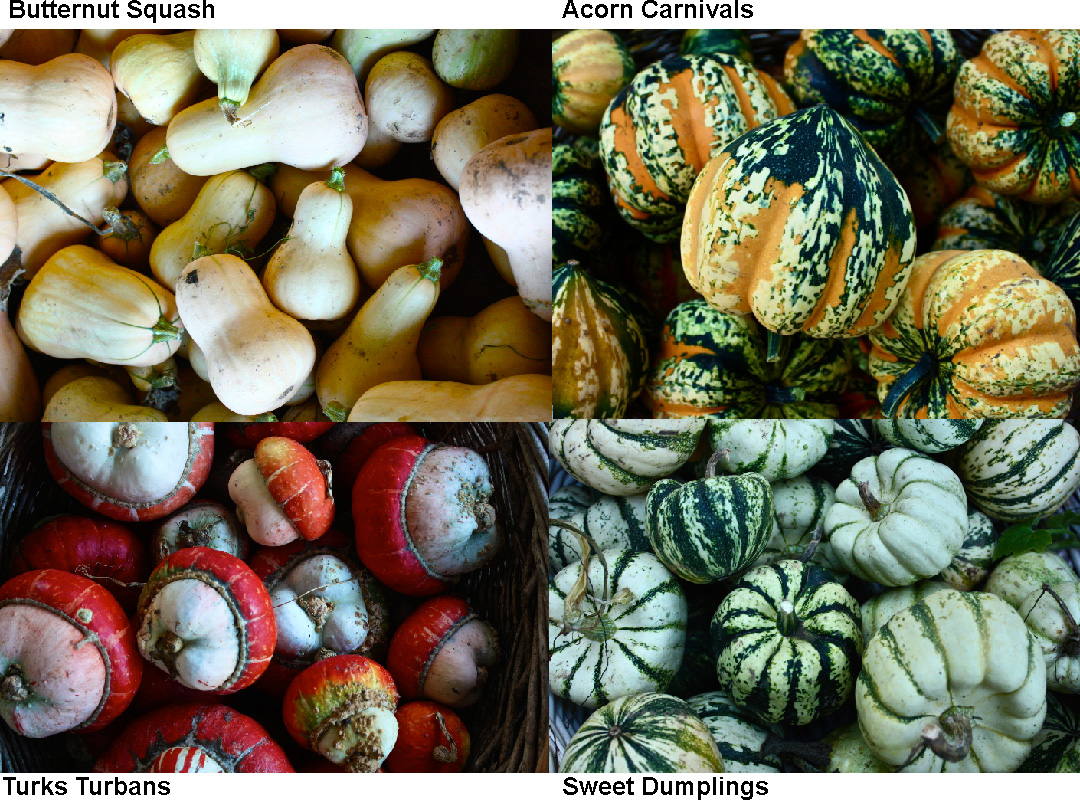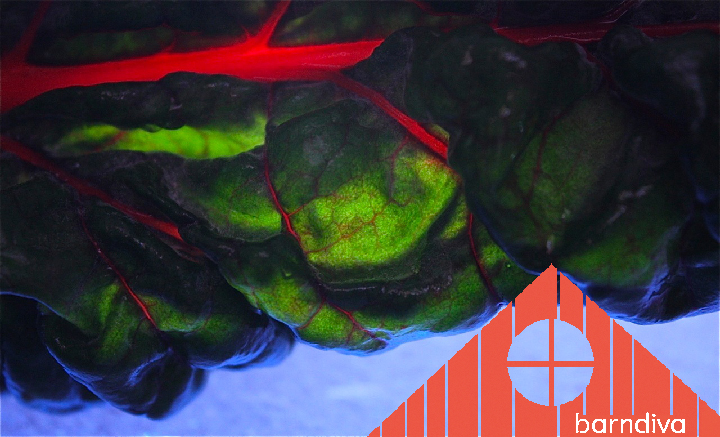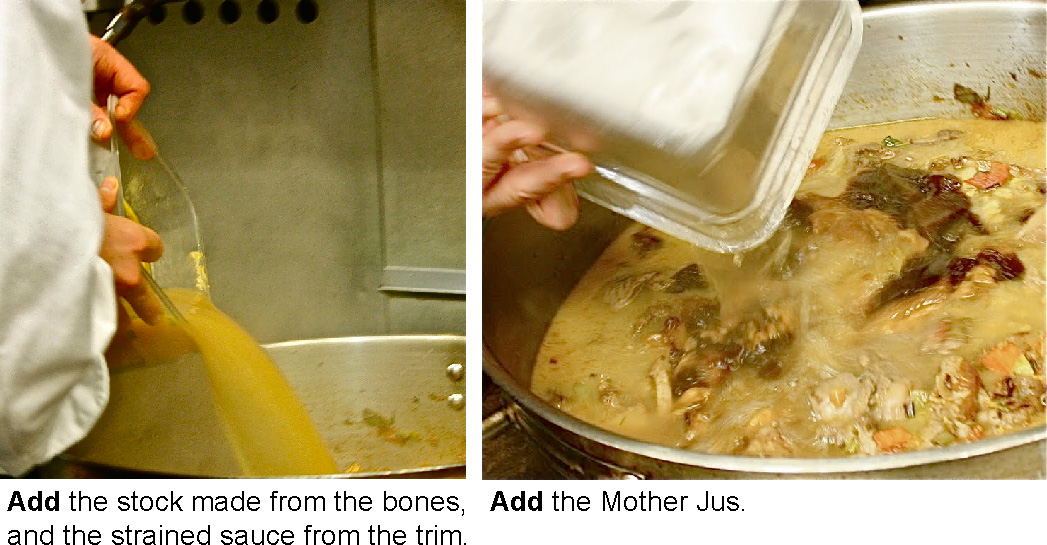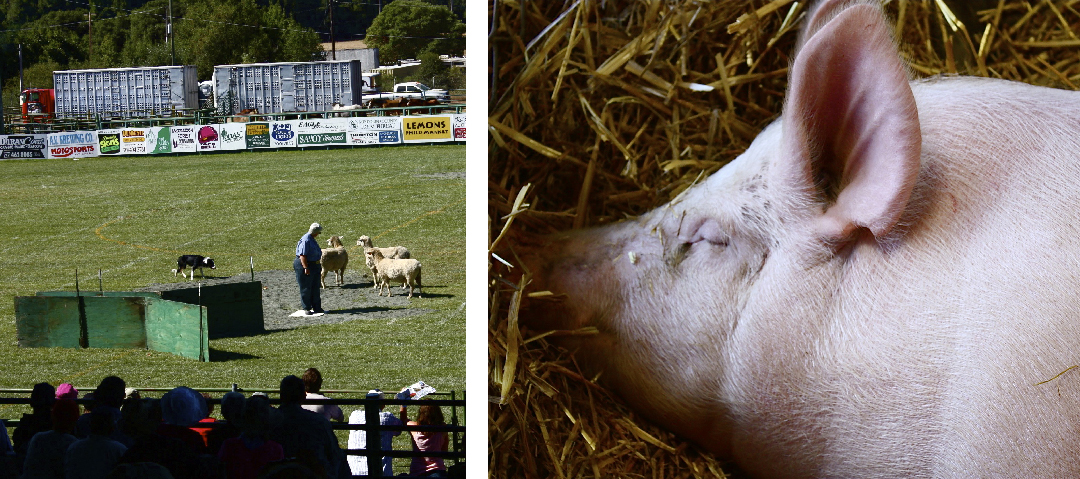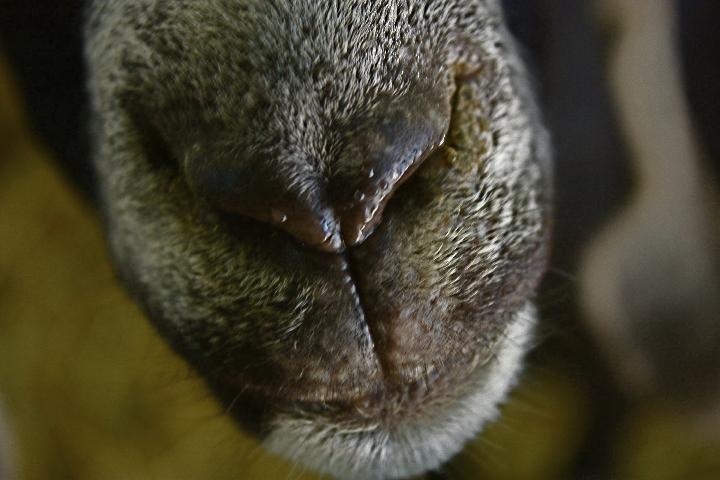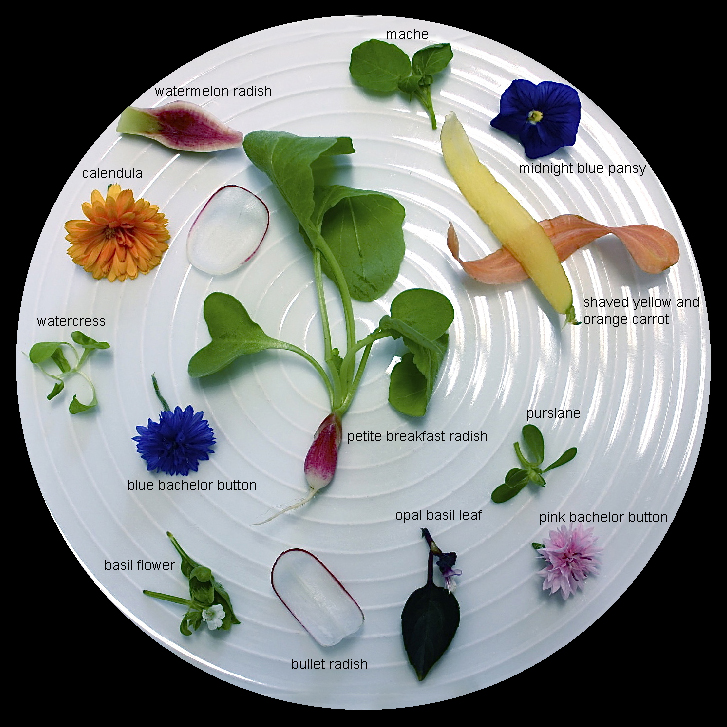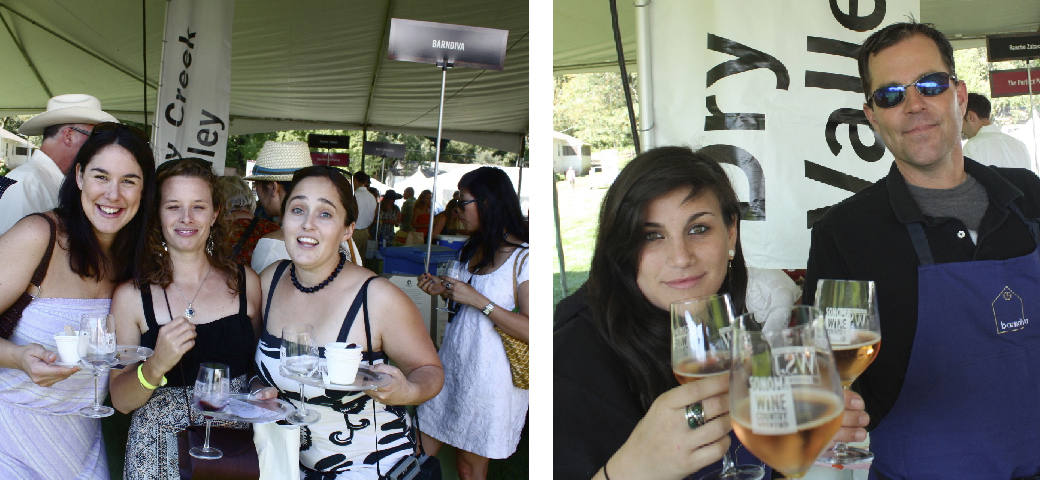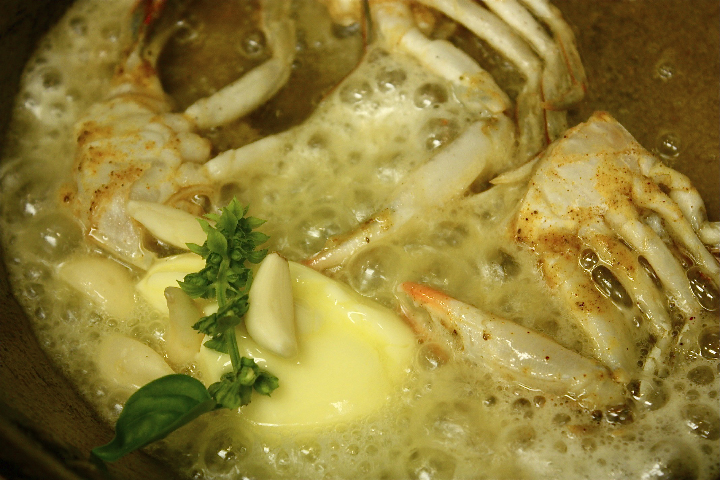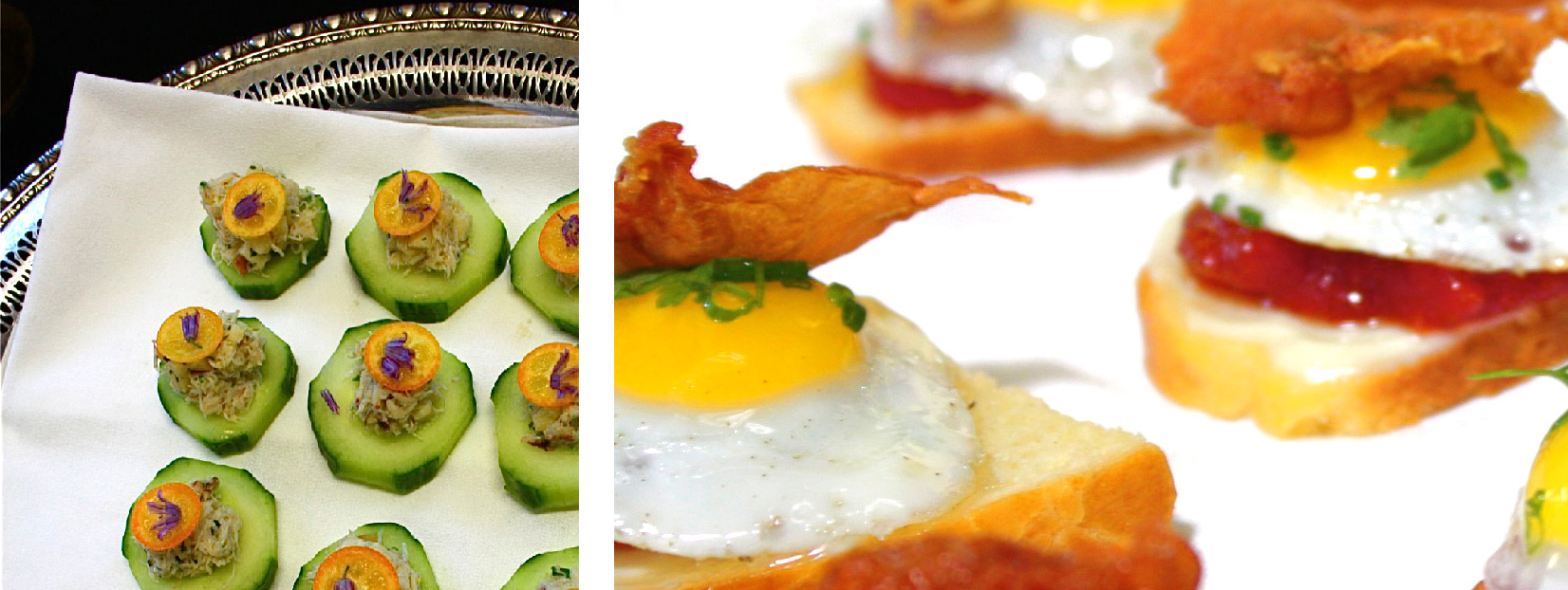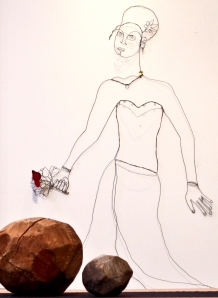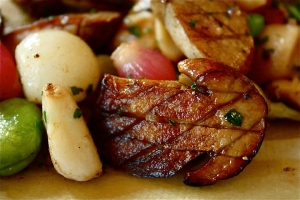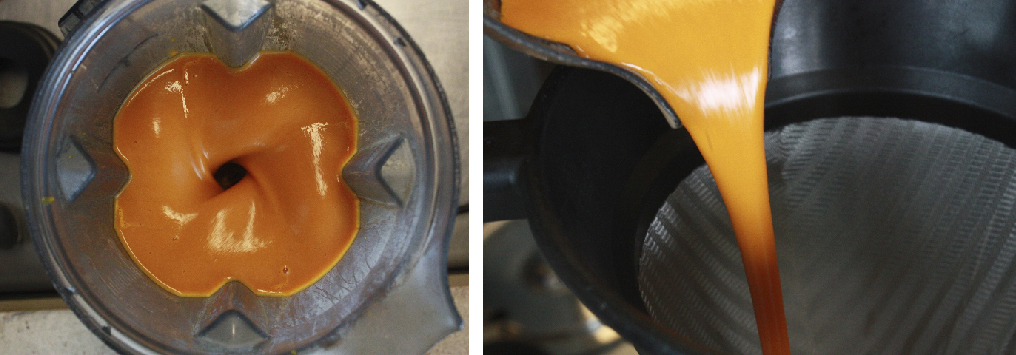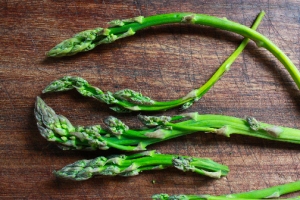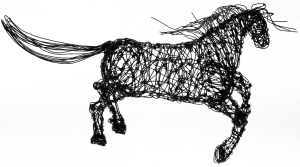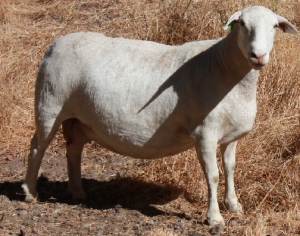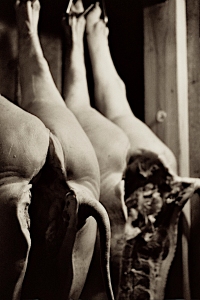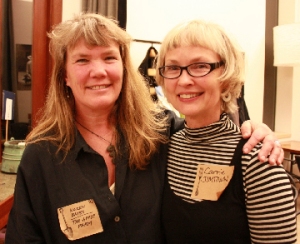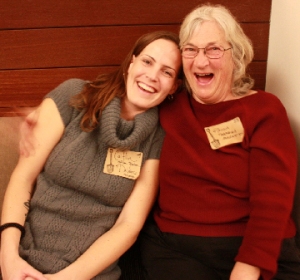Dish of the Week
Artichoke Heart Provençal
 Chef thought it would be fun for Dish of the Week to follow Pancho around as he made the delicious, vinegary-bright hearts of artichoke filling for the Saffron Ravioli we are currently serving with a lovely seared halibut entrée. Cut it into bigger dice and the same recipe (sans the pasta) is a great accompaniment to any fish or chicken dish. I was game, but then I had an ulterior motive. I love artichokes, but more often than not when it comes to cooking them I seem to take the easy route and just boil or steam them, eating the leaves with copious amounts of melted butter or aioli as a dipping sauce. For all the messy fun you can have, even if artichoke fatigue hasn’t set in by the time you get to the heart you still have to deal with those fiddly, fibrous beards, AKA the Choke.
Chef thought it would be fun for Dish of the Week to follow Pancho around as he made the delicious, vinegary-bright hearts of artichoke filling for the Saffron Ravioli we are currently serving with a lovely seared halibut entrée. Cut it into bigger dice and the same recipe (sans the pasta) is a great accompaniment to any fish or chicken dish. I was game, but then I had an ulterior motive. I love artichokes, but more often than not when it comes to cooking them I seem to take the easy route and just boil or steam them, eating the leaves with copious amounts of melted butter or aioli as a dipping sauce. For all the messy fun you can have, even if artichoke fatigue hasn’t set in by the time you get to the heart you still have to deal with those fiddly, fibrous beards, AKA the Choke.
 With artichokes (as with most things) when it's all about the heart Ryan cuts right to the chase: the first thing this recipe calls for is to strip the outer leaves and discard them, paring the stem down to almost nothing. As Pancho did this he tossed what he’d cleaned into a cool water bath that held cut up lemons and some parsley, the better to keep the artichokes from discoloring, which they do quite rapidly. Here’s a revelation for all you other lazy artichoke lovers: a half hour in this bath and using just the edge of a spoon, the choke slides off the heart like water off a duck’s back.
With artichokes (as with most things) when it's all about the heart Ryan cuts right to the chase: the first thing this recipe calls for is to strip the outer leaves and discard them, paring the stem down to almost nothing. As Pancho did this he tossed what he’d cleaned into a cool water bath that held cut up lemons and some parsley, the better to keep the artichokes from discoloring, which they do quite rapidly. Here’s a revelation for all you other lazy artichoke lovers: a half hour in this bath and using just the edge of a spoon, the choke slides off the heart like water off a duck’s back.
 While they were soaking Pancho set about making a Barigoule, the French term for a traditional artichoke braise technique which takes large cubes of onions, carrots, fennel, garlic cloves and herbs and sweats them in a few tablespoons of VOO before adding wine and vegetable stock. Roger Vergé, well known for his Barigoule, uses thyme but as Ryan was going a bit further south with this recipe he used rosemary, a stronger herb with heavier green aromatics. The hearts were added once the vegetables were soft, but just long enough to heat them through. The white wine was brought to a boil and allowed to reduce until the fumes began to dissipate. At this point Pancho added vegetable stock to cover and lowered the heat.
While they were soaking Pancho set about making a Barigoule, the French term for a traditional artichoke braise technique which takes large cubes of onions, carrots, fennel, garlic cloves and herbs and sweats them in a few tablespoons of VOO before adding wine and vegetable stock. Roger Vergé, well known for his Barigoule, uses thyme but as Ryan was going a bit further south with this recipe he used rosemary, a stronger herb with heavier green aromatics. The hearts were added once the vegetables were soft, but just long enough to heat them through. The white wine was brought to a boil and allowed to reduce until the fumes began to dissipate. At this point Pancho added vegetable stock to cover and lowered the heat.
 But while you want the broth to simmer you still need to take care the hearts don't discolor. To prevent this Chef employed a nifty trick I'd never seen before. He does not use a lid which would would trap the steam and encourage oxidation. Instead, he tucks a fresh folded linen napkin down into the saucepan where it lightly rests on the simmering artichoke mixture. Voila.
But while you want the broth to simmer you still need to take care the hearts don't discolor. To prevent this Chef employed a nifty trick I'd never seen before. He does not use a lid which would would trap the steam and encourage oxidation. Instead, he tucks a fresh folded linen napkin down into the saucepan where it lightly rests on the simmering artichoke mixture. Voila.
 When the artichokes were just cooked through, Pancho lifted them from the broth and diced them finely with the other ingredients: Picholine olives, peeled heirloom tomatoes, red onions, garlic confit, roasted Piquello peppers and fresh chives. Salt, pepper and a little sherry vinegar to taste and Pancho smiled. We were there.
When the artichokes were just cooked through, Pancho lifted them from the broth and diced them finely with the other ingredients: Picholine olives, peeled heirloom tomatoes, red onions, garlic confit, roasted Piquello peppers and fresh chives. Salt, pepper and a little sherry vinegar to taste and Pancho smiled. We were there.
 He used a tablespoon of filling for each ravioli ~ as a side dish to accompany an entrée allow a cup per person. Deliciously piquant, this is a simple preparation for artichoke hearts that uses no butter or mayo. Good news for the health of my heart. And yours, if it's a consideration.
He used a tablespoon of filling for each ravioli ~ as a side dish to accompany an entrée allow a cup per person. Deliciously piquant, this is a simple preparation for artichoke hearts that uses no butter or mayo. Good news for the health of my heart. And yours, if it's a consideration.
In the Field with Friends
Squash Love
 Ever since I was a child I’ve had a thing for Winter Squash ~ the gorgeous patterns, the sinuous lines, the vibrant colors. With their lopsided shapes and expressive stems they are beautiful in a highly idiosyncratic way, the tropical fish of the vegetable world. While the squash you find in the supermarket have all been genetically dumbed down to conform to uniform shapes and flat pumpkin carving sides, if you look for winter squash and gourds in Farmer's Markets you will find heirloom varieties going back hundreds of years.
Ever since I was a child I’ve had a thing for Winter Squash ~ the gorgeous patterns, the sinuous lines, the vibrant colors. With their lopsided shapes and expressive stems they are beautiful in a highly idiosyncratic way, the tropical fish of the vegetable world. While the squash you find in the supermarket have all been genetically dumbed down to conform to uniform shapes and flat pumpkin carving sides, if you look for winter squash and gourds in Farmer's Markets you will find heirloom varieties going back hundreds of years.
Happily, The Fincher's, great friends and farmers from Earlybird’s Place (Earl Loves Myrna Loves Earl) share my fascination for the weird and the wonderful of the genus world known as Cucurbita. I know it’s Fall when I get a call from Myrna to come over and cherry pick through her ‘Fall Collection’ which we display in the restaurant and the gallery. Unlike Summer Squash, which are harvested as immature fruit, Winter Squash will keep ‘til well after Christmas, unless of course you do what we do, and slowly, deliciously, cook through them.
A Very Special Baby Shower Brunch
We don't just throw great wedding and rehearsal dinners in the Studio Gardens ~ any reason to celebrate is enough for us to break out the flowers. Sunday we took a personal day to throw a Baby Shower for K2, my wonderful assistant, who in addition to keeping me sane is the talented gal who manages to wrestle Eat the View out of my camera and brain and onto the blog each week. K2 and John's new baby is due around Thanksgiving and while no one knows (or cares!) whether it's a boy or a girl, around Barndiva it's no secret we're hoping for another glorious redhead to keep sister Teagan company.
All text Jil Hales. All photos Jil Hales(unless otherwise noted) Food Shots of the Brunch by K2's friend, Richert Gordon Salondaka





